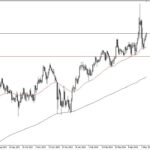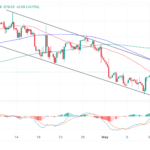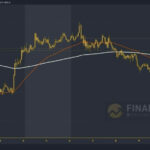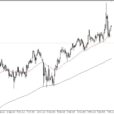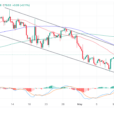
Just as the railroad barons of the 19th century came to realize that their business was “transportation” rather than “railroads,” most financial professionals involved with futures and options trading have come to appreciate the fact that our business is not “futures and options,” but rather “risk management.” Futures and options are just one set market mechanisms that can be used to solve risk management problems; and while this mindset is appropriate for virtually all segments of futures and options activity, it is particularly relevant for corporate treasurers facing interest rate risk exposures.
Over the years, the futures and options component of the risk management business has generally expanded – – quite dramatically through 1994, with some leveling off occurring over the last several years. The pre-1994 expansion was attributable to an expansion of listings of futures and options into various sectors – – primarily in connection with financial risks. Starting with the introduction of currency futures contracts in 1972, coverage of these instruments expanded to encompass fixed income markets (i.e., interest rates) and later equity products (a host of stock index futures and options). At the Chicago Mercantile Exchange, the banner volume year of 1994 was largely reflective of unprecedented volatility, primarily in connection with fixed income markets. Trading volume in Eurodollar futures – – the linchpin short-term interest rate vehicle – – soared as Alan Greenspan’s policies drove rates up by over 300 basis points with a year’s time. Since then, interest rates have been remarkably stable, and as a consequence the perceived need for risk management in this sector seems to may have diminished and Eurodollar trading volume has edged lower.
Rather than reading this evolution as any indication of a lessening of the need for Eurodollar futures and options – – or risk management products more generically – – this history should serve as a clarion call. Undoubtedly, despite the longevity of this current quiescent period in dollar-denominated interest rates, one thing can surely be said about volatility: volatility will change. And when it does, prudent managers – – ones that have anticipated the change in the financial landscape – – will be ready.
Preparing for this inevitable sea change requires making the investment in time and human capital to come to understand the possible choices that are available when managing price risk, such that intelligent business decisions can be made. Importantly, there is no single solution. Rather, managers must weigh the considerations of risks versus opportunities and direct costs versus opportunity costs before any specific strategy can be pursued. Moreover, to further complicate the issue, it is relevant to recognize that not all risks are the same.
In particular, for corporate treasurers with domestic operations, three different types of interest rate exposures are present. The first deals with the risk of rising rates in connection with variable interest rate debt instruments or prospective funding activities; the second pertains to the opportunity lost when fixed-rate funding is in place during periods of declining interest rates; and the third is the risk associated with declining yields on the firm’s short term balances.



